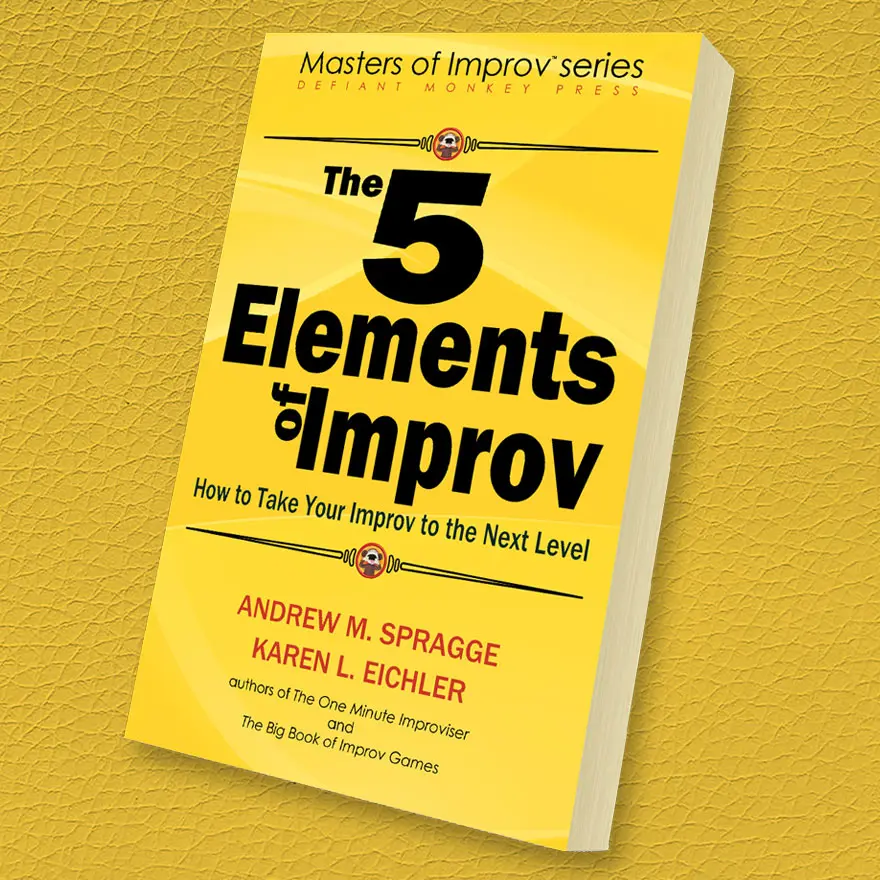The following is an excerpt from our book, The 5 Elements of Improv

Improvisation has the inherent advantage of not being time-bound; we can move freely backward and forward, leaping through the time stream in the wink of an eye. With this freedom comes the danger of losing the progressive aspect of our story; no matter how we move through subjective time, our story must always move forward.
While time in the real world is perceived as being linear, in the arts it is highly malleable, subject to the whims of author, actor and improviser alike. We may start at point M, jump forward to point T one scene later, then flash all the way back to point B without causing so much as a ripple in the fabric of Space/Time.
“Inexperienced improvisers tend to get themselves stuck in a linear time-stream.”
They have great difficulty tearing themselves free from the steady progression of a scene and jumping about in time. It’s almost as if they fear the repercussions of violating the linear model, or perhaps they are afraid of getting “lost” in time, never to find their way home again. To combat this fear, we must always keep in mind that we are in control of the process, no matter how “seat-of-the-pants” it might look or feel to the audience.

Feel free to move in terms of space, as well. So many improvisers find themselves rooted to the spot and fail to take advantage of scene changes to move the story forward. Perhaps since they have invested energy in setting the environment, they are reluctant to move on. If you find you’re stuck in this position, uproot yourself; remember that no matter how realistic your environment may seem, it’s all in your head. Let it go. Embrace the freedom that saying, “Meanwhile, at the Blue Parrot Lounge,” affords you (we’ll discuss this in more detail in Chapter 4.) Audiences will become bored if you stay in one location too long (unless, of course, you have woven an especially enthralling narrative; if this is the case, they’ll stay with you until the end.)
There are many excellent games and exercises which help fearful actors let go of their temporal and spacial anchors and roam freely through Space and Time. For now, though, let’s explore the meaning of the title of this section, “Always Move Forward, Even When Going Back.” While it sounds self-contradictory, in reality it makes a great deal of sense.
“Ideally, when we are playing a scene we have some goal, whether we start the scene with it or discover it along the way.”
As long as we continually move toward that goal, we will keep the audience with us. On the other hand, if we stray too far off the path, we will lose the audience. It is important, therefore, that we always move toward that goal; everything we do of consequence in a scene (and there should be little, if anything, that isn’t) needs to drive us in the direction of that goal. If Hamlet strays from his path of vengeance, if the Phantom of the Opera gets bored with Christine, if Starbuck gives up his job as Rainmaker, then the audience is cheated and will walk out, either physically or, at the very least, mentally. We will have once again failed to fulfill our contract.
As we bounce backward and forward from one time to another we must always move the underlying narrative toward our goal, even if that goal changes during the course of the scene. Whether or not the audience is clear as to what that goal is (and sometimes they are not until the very point we reach it) is immaterial; they will know in their gut if we are wandering aimlessly instead of remaining laser-focused.

A note regarding flashbacks before we conclude this section: don’t be afraid to start a flashback (or a flashforward, for that matter) if you feel the urge. As with anything else in a scene, be certain that it adds to the narrative. A flashback simply for the purpose of getting in a cheap joke or pun is irresponsible. You insult your audience, your scene partner, and yourself by doing so. They can, however, be used to great advantage in setting up or explaining components of your scene: an ancestor getting cursed by a Gypsy, a wedding night promise coming back to haunt you, aliens landing 20 years ago and going into hibernation under your wine cellar. Don’t be afraid to use them (they can be great fun!) but always make sure they work with the scene’s progress, not against it.
No matter how you play with time in your scenes, keep the story moving forward. If the audience senses stagnation, they will abandon your story.

The 5 Elements of Improv – How to Take Your Improv to the Next Level

